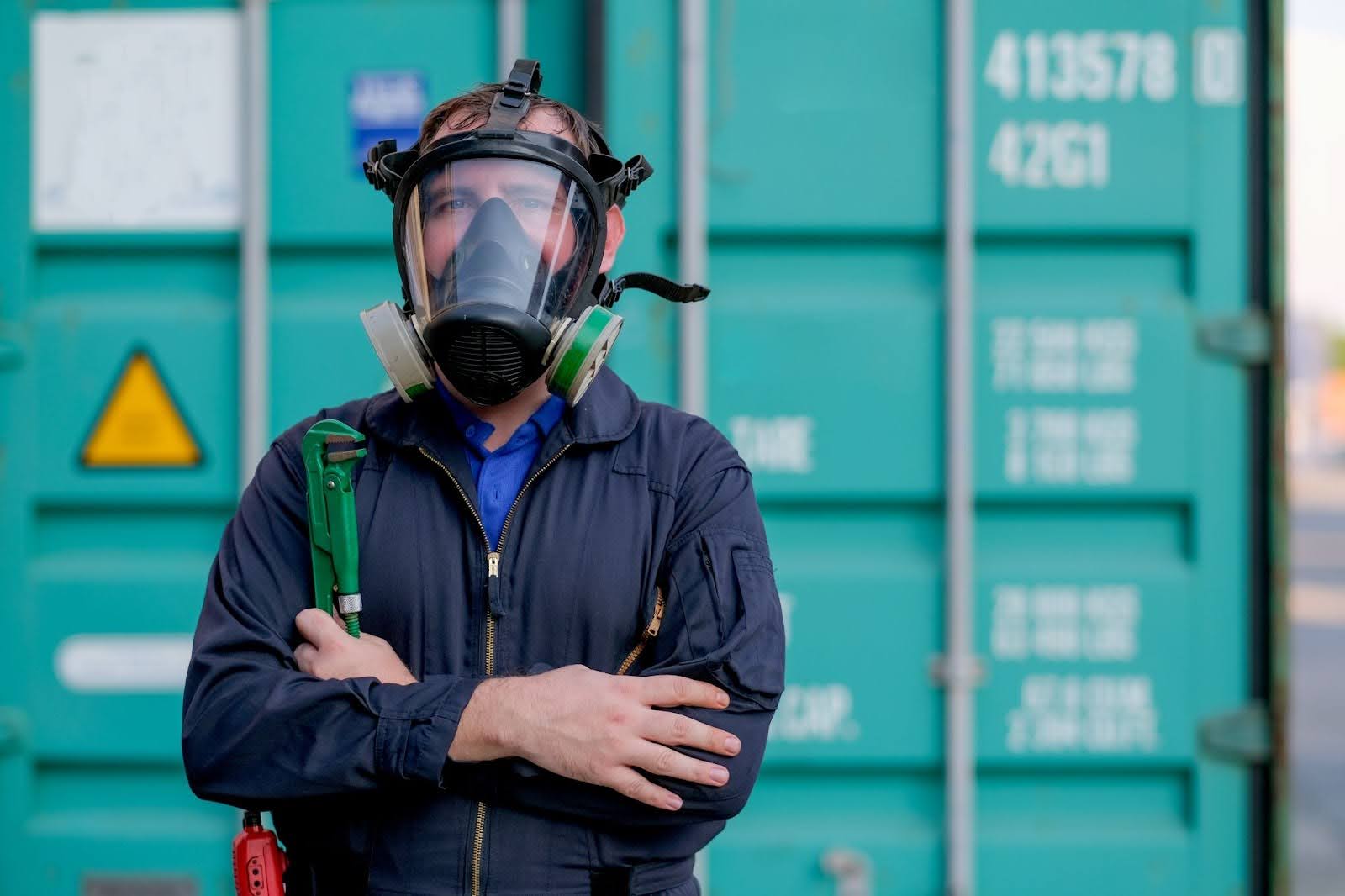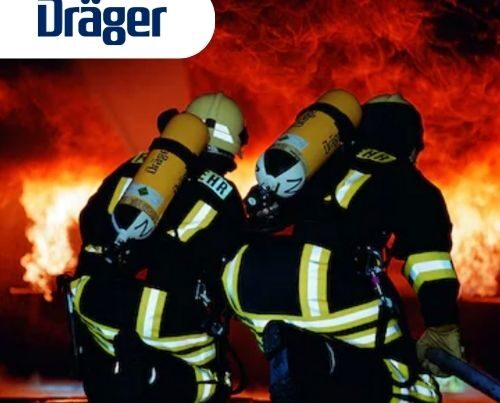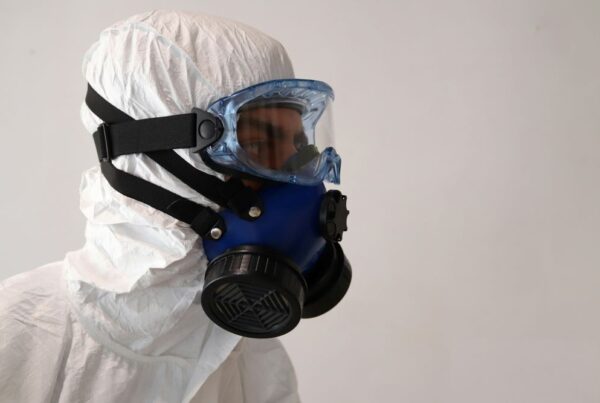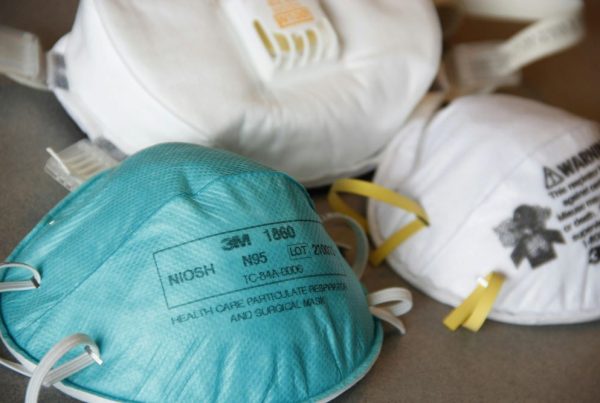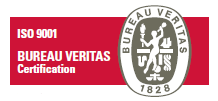Working in a chemical plant means being constantly surrounded by substances that can be hazardous to a worker’s health.
Being exposed to toxic vapours and fine particulates is part of the job, and wearing industrial respirator protection equipment is essential for minimising exposure.
However, safety in chemical facilities involves more than just putting on a Self-Contained Breathing Apparatus (SCBA).
The protection it offers depends on how well it seals to the face. It’s because even a small leak can let harmful contaminants in, causing long-term health issues such as silicosis, asbestosis, or permanent lung damage.
To make sure respirators truly protect workers, SCBA fit testing is necessary. But which kind of SCBA fit testing should your chemical plant team perform—qualitative or quantitative?
Why SCBA Fit Testing Matters in Chemical Facilities
Inhaling or breathing in airborne contaminants is one of the most common ways workers can be exposed to dangerous concentrations of chemicals.
Some chemicals are carcinogenic or can cause severe long-term health effects when inhaled repeatedly, even at very low levels.
For this reason, proper respiratory protection is essential. An SCBA respirator is widely used in the chemical sector to safeguard workers from such contaminants.
However, even the most advanced respirator, like an SCBA, cannot offer full protection if it doesn’t fit correctly.
SCBA fit testing matters especially in chemical facilities to ensure the apparatus forms a tight, secure seal on the wearer’s face and that the user knows how to wear it correctly.
It confirms that the equipment will work as intended when used in real conditions, especially during emergencies or chemical releases.
Understanding SCBA and Its Role in Chemical Operations
Unlike standard respirators that rely on filtering contaminants from the surrounding air, a Self-Contained Breathing Apparatus (SCBA) provides its own independent air supply.
This makes it suitable for environments where the air may be oxygen-deficient or contaminated with hazardous chemicals and toxic gases.
Workers in chemical, oil and gas, and construction sectors use SCBAs to stay protected in environments with low oxygen or hazardous vapors.
But specifically for chemical operations, SCBA supplies clean air from its own tank, keeping workers safe from gases like ammonia and chlorine.
The Two Types of Fit Testing Methods
Regulatory bodies such as ISO (16975-3:2017) and the Occupational Safety and Health Administration (OSHA) outline the procedures and requirements for conducting respirator fit testing to ensure an effective seal between the respirator and the wearer’s face.
These guidelines recognize two primary fit testing methods, which are qualitative fit testing and quantitative fit testing. Both methods are used to evaluate how well a respirator fits.
| Qualitative Fit Testing | Quantitative Fit Testing | |
|---|---|---|
| Basis of Test | Wearer’s sensory detection (taste, smell, irritation), pass-or-fail method | Uses specialized equipment to detect and measure air leakage inside and outside the respirator. |
| Agents/Equipment | Bitrex, saccharin, or isoamyl acetate | Uses instruments such as the TSI PortaCount to detect and measure particle leakage inside the respirator. |
| Result Type | Subjective, relying on the test subject’s truthful reporting | Provides numerical fit factor results. |
| Advantages | Simple, low cost, no special training required. | Data-driven accuracy—objectivity, reducing possible human errors. |
| Limitations | Subjective results, not suitable for full-face SCBAs. | Higher cost, requires calibration and trained personnel. |
Choosing Between Qualitative and Quantitative Fit Testing
Qualitative fit testing is suitable for lower-risk settings or when using half-mask respirators, as it is quick and cost-effective but relies on the wearer’s ability to sense the test agent.
Quantitative fit testing, on the other hand, provides precise, data-driven results using specialised instruments. It is recommended for chemical and high-risk facilities and is required for SCBA users under international safety standards.
Though it costs more, its accuracy offers greater assurance of protection in hazardous environments.
Fit Testing Frequency and Compliance
According to OSHA, fit testing must be performed annually. Additionally, since each respirator brand, model, and size fits differently, workers should be retested whenever they change equipment.
A new fit test is also necessary after significant weight change, facial surgery, or dental work to verify that the respirator still provides an effective seal.
Safety officers should maintain written fit test records and internal safety reviews for regulatory compliance and future audits.
Key Challenges in Conducting Fit Tests in Chemical Environments
SCBA fit testing in chemical facilities can be challenging due to environmental and operational factors.
Airborne vapours may interfere with test agents, while temperature and humidity can affect both comfort and test accuracy. There’s also a risk of contamination if testing isn’t conducted in a controlled area.
In addition, ensuring respirator compatibility with other PPE, such as face protection and head protection, is essential, as helmets or face shields can disrupt the respirator seal.
Conducting tests under realistic workplace conditions helps confirm that protection remains reliable during actual operations.
SCBA Fit Testing Checklist for Chemical Plant Safety Officers
- Verify the correct SCBA type and size for each worker.
- Perform a fit test before first use and annually thereafter.
- Train employees on how to don and check seal integrity.
- Repeat fit testing after any facial changes (e.g., weight fluctuation, facial hair, injury) or equipment replacement.
- Record all fit test results and maintain up-to-date equipment calibration and maintenance logs.
Protect Your Team with Reliable SCBA Fit Testing
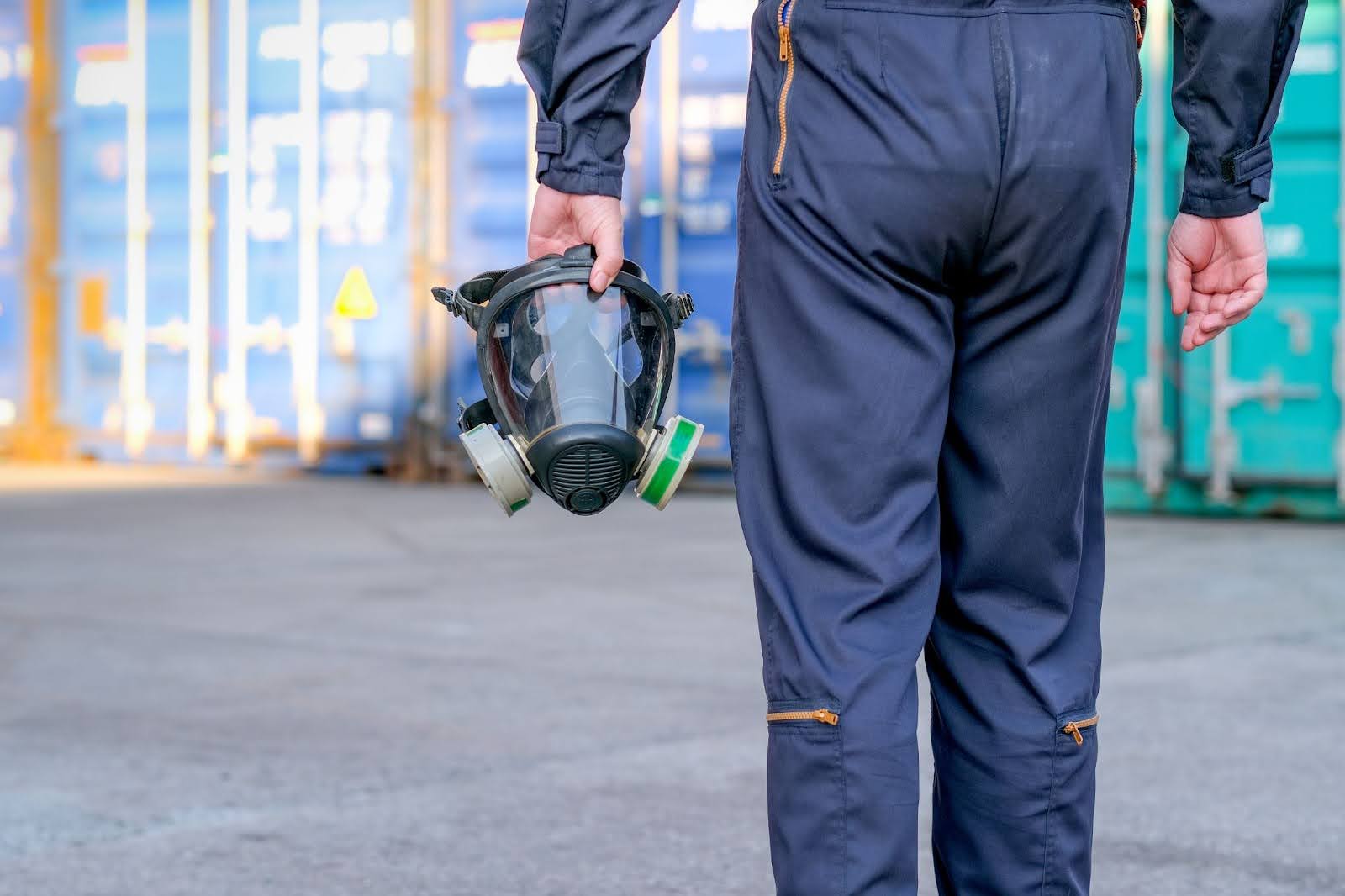
Quantitative fit testing provides the most accurate and dependable results, making it the preferred choice for SCBA users in chemical facilities.
Safety officers should take the lead in maintaining consistent testing schedules, updating equipment, and reviewing safety protocols to keep every worker protected.
For reliable SCBA masks and expert support, Lim Kim Hai Electric is a trusted industrial respiratory protection equipment supplier, offering comprehensive fit testing solutions designed to ensure every respirator provides a proper seal and maximum protection for workers in chemical facilities.
Contact us today to learn more about our SCBA fit testing services and strengthen your chemical facility’s respiratory safety and compliance standards.

